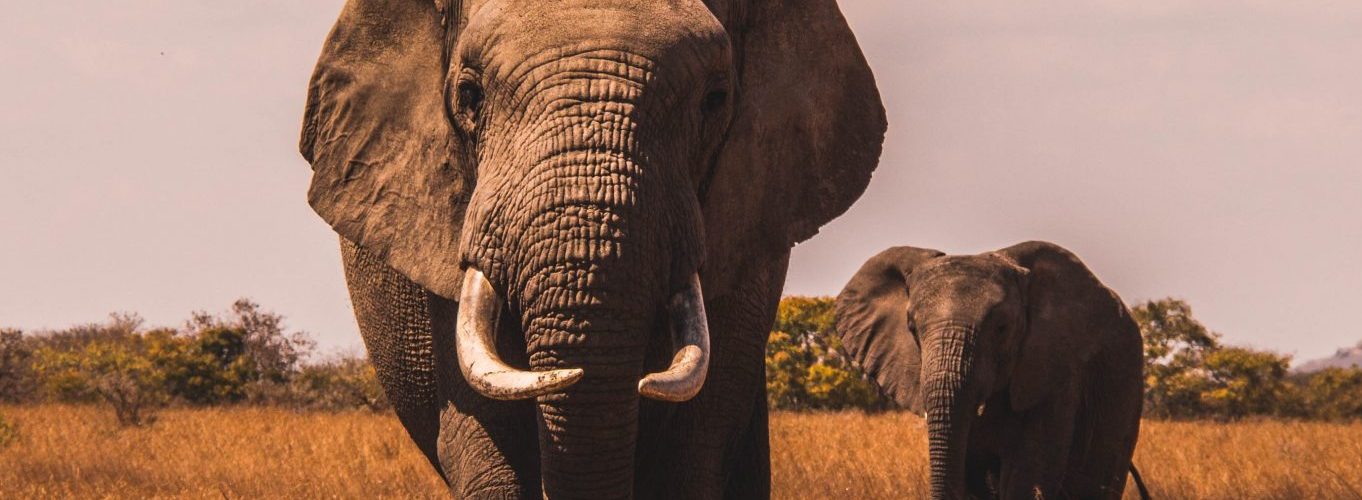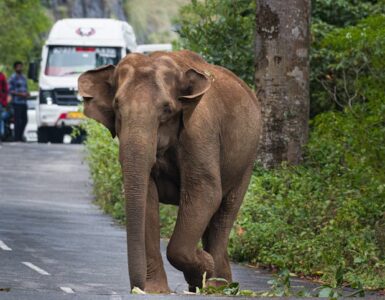Any child who begins learning the alphabet, E for Elephant, or whatever is spoken in the native tongue, is a common learning representation.
Elephant’s large physical features and extraordinary trunk are something that even a child always remember. Though we know about Elephants from a young age, only a few truly understand them.
Let us take you through some features of Elephants that might help you know these creatures a little better.
Habitat
Elephants are native to only Africa and Asia
In Africa, there are two species of elephant, the African savanna elephant (Loxodonta africana), and the African forest elephant (Loxodonta cyclotis) while in Asia there is one, the Asian elephant (Elephas maximus).
The African forest elephants inhabit the dense rainforest of west and central Africa. African savanna elephants are mostly found in the wooded savannas and grasslands of sub-Saharan Africa. The Asian Elephant is mainly found in the forests and grasslands in India, Nepal, Bangladesh, Sri Lanka, and Thailand.
Physical Features of Elephants
Found in wooded savannas and grasslands of sub-Saharan Africa, the African Savanna male elephant is the world’s largest land animal, standing up to 3m high and weighing up to 6,000kg on average. Some adult African Savanna elephants can weigh about 7,500 kg.
Asian elephants are slightly smaller reaching 2.7m tall and weighing between 3,000 to 6,000 kg.
Difference between Asian Elephant and African Elephant
All three Elephant species have different physical features, the easiest way to distinguish African elephants from Asian elephants is to look at the ears, trunks, and head.
African elephants have much larger ears that look sort of like the continent of Africa, while Asian elephants have smaller ears.
African elephants have rounded heads, while the heads of Asian elephants have two small domes.
Finally, there is a trunk difference, African elephants have two small projections (fingers) at the tip of their trunks, whereas Asian elephants have one.
Elephant’s Trunk
The large physical structure is fascinating, but the most unusual and incredible feature of Elephants is their trunk, unlike any other mammal on land.
The long pipe-like structure is their elongated nose that is joined with their upper lip and is used for a variety of purposes, including smelling food, lifting objects, siphoning water, spraying dust and water, using as a snorkel while swimming, caring for their young ones, fighting with other elephants, and much more.
As per a study, Elephant’s “Trunk musculature consists of ~40,000 muscles, which compares to only 600–700 muscles in the human body.” The trunk is a powerful and extremely sensitive physical feature of Elephant’s body.
Do you know Elephants are not the only animals with Trunks? Find out other animals with Trunk features.
Food and Diet
They derive all their strength and weight from a completely plant-based diet, which can measure up to 150kg of food per day.
They spend about 16 hours a day feeding on grasses, leaves, shrubs, fruits, and roots depending on the season and their habitat. When it’s dry, elephants eat woody parts of trees and shrubs like twigs, branches, and barks.
Social Interactions and Communication
Elephants are highly social and intelligent creatures, and they demonstrate this behavior by remaining in close family groups.
For Asian and African elephants, herds are led by a matriarch who is typically the oldest and largest female. She leads a multi-generational herd of females.
Female elephants have the longest pregnancy of any mammal. It’s almost 2 years before baby elephants are delivered. Baby elephants stay with their mothers for up to 10 years.
Male elephants tend to live in isolation or in small bachelor groups.
Many times they show their emotional side by using their trunks to caress and comfort their babies and even touch other elephants to greet, console, and express compassion.
They can send vocalizations over long distances. They make a variety of sounds, including snorts, roars, cries, barks, and trumpet calls.
Another unique feature about Elephant is their ability to communicate through seismic signals – sounds that create vibrations in the ground – which they may detect through their nerve endings in their feet and trunks.
Memory and Intelligence
Elephant brains can weigh about 5 kg, which is about 3 to 4 times larger than the human brain, and the largest brains of all animals living on land.
Though Humans are still the most intelligent creatures on the Planet, the large brain allows Elephants to recall distant watering holes, places of food, other elephants, and humans they have encountered, even after the passage of many years.
Elephants can also transmit their knowledge from generation to generation, which has been beneficial to their survival.
Skin Care Routine
Elephant’s skin is 2.5cm thick in most places, which requires an extensive skin-care routine.
Elephants keep their skin clean and protect themselves from sunburn by taking regular dust and mud baths. For this, they use their trunks to pull up dust or mud from the ground and spray around their bodies.
Environment Protection
Elephants are ecosystem engineers as they play extremely crucial roles within their habitat by maintaining the health of the forest and helping in climate mitigation.
In the process of finding large quantities of their food, they explore different parts of their ecosystem, thereby trampling on the grasses, removing leaves and branches, and bringing down smaller trees. This helps in the survival of larger trees that have a larger capacity to absorb and store more CO2.
In addition, eating a lot of food also results in large quantities of excrement. Sometimes over half of their eaten food comes out as dung which helps in dispersing seeds of many plants and trees.
Their mineral pack dung also enriches the soil. This directly promotes the growth and spread of forests which have a high capacity for carbon sequestration.
Elephants’ habits also help the ecosystem, when water becomes scarce. Their memory makes them reach places where water can be found or they use their skills to dig for water in riverbeds, creating water pools where other small animals come to drink and thrive.
Wrapping Up
Overall, Elephants are not only big but their interesting features and their environmental contributions, make them extremely large for mankind.
Unfortunately, it is the humans that pose the biggest danger to survival.
Ivory trade, deforestation, urbanization, and infrastructure development are posing serious threats to their existence. Elephants are finding it hard to traverse their forest routes to reach their sources of water and food, and they’re coming into often dangerous contact with people.
Around 90% of African elephants and 50 % of Asian Elephants have been wiped out in the last few decades.
It is time that we protect elephants and their habitats so that our future generation can continue to learn “E for Elephants”.
12 August is celebrated as World Elephant Day every year to honor the elephants and spread awareness about the threat these giants face.
Want to know more about World Elephant Day? Read here.
You can watch this video for a better visual understanding






Add comment